透過披薩的遷徙描繪食物網絡
在全球化背景下,民族食物(ethnic food)的一大特徵便是融入跨國框架,在德國的披薩已不同於意大利的披薩,也與五百年前的披薩大相徑庭。民族食物不可避免地需採用本地食材來展現其文化身份,這種調整也為融入新環境提供機會,將食物以當地食客更為熟悉的飲食語言介紹給他們。自此,飲食體驗成為一種界面,向食客講述其民族故事。
在研究飲食溝通的過程中,Yen 展開了一系列披薩專案,通過重製世界各地的披薩,探索民族食物如何在跨國的結構下演變。作為廣受喜愛的國際化美食,披薩已經融入各地的飲食習慣,成為數十億人口的日常主食。披薩在不同文化中發展出獨特的特徵,展現跨文化影響的痕跡,這種適應性激發了人們進行各種實驗,並以本地食材重新詮釋這道曾經充滿異國風味的美食。
Yen 重製了來自不同地區的 10 款披薩,包括羅馬尼亞、匈牙利、烏克蘭、德國、黎巴嫩、尼泊爾、玻利維亞、台灣、中國和香港,這些披薩的重製基於受訪者對家鄉披薩以及他們旅行途中體驗過的披薩的描述,每款披薩都經過拍攝記錄,使用義大利食譜或與當地料理特徵相似的披薩則被排除在這次實驗成果外。
Visualising Food Network through the Migration of Pizza
One defining feature of ethnic food in a globalized context is its integration into a transnational framework. Pizza in Germany differs from pizza in Italy or what pizza was 500 years ago. Ethnic food inevitably faces the challenge of adapting local ingredients to represent its cultural identity. However, this adaptation also provides an opportunity to merge its unique characteristics with a new environment, introducing a more familiar culinary language to local diners. In this way, the dining experience becomes an interface that narrates the cultural story of its origins to its audience.
In her study of food communication, Yen launched a project to explore how ethnic food transforms within transnational structures by recreating pizzas from around the world. As an internationally beloved dish, pizza has been widely globalized, integrating into regional diets and becoming a staple for billions of people. Across different cultures, pizzas have evolved unique characteristics, reflecting the intercultural influences that shape them. This adaptability inspires people to experiment and reimagine this once-exotic delicacy using local ingredients.
Yen recreated 10 pizzas from various regions, including Romania, Hungary, Ukraine, Germany, Lebanon, Nepal, Bolivia, Taiwan, China, and Hong Kong. These recreations were based on interviewees’ descriptions of the pizzas from their home countries and those they encountered while traveling. Each pizza was documented through photography. Pizzas that adhered closely to Italian recipes or shared similar traits with local cuisines were excluded from this experiment.
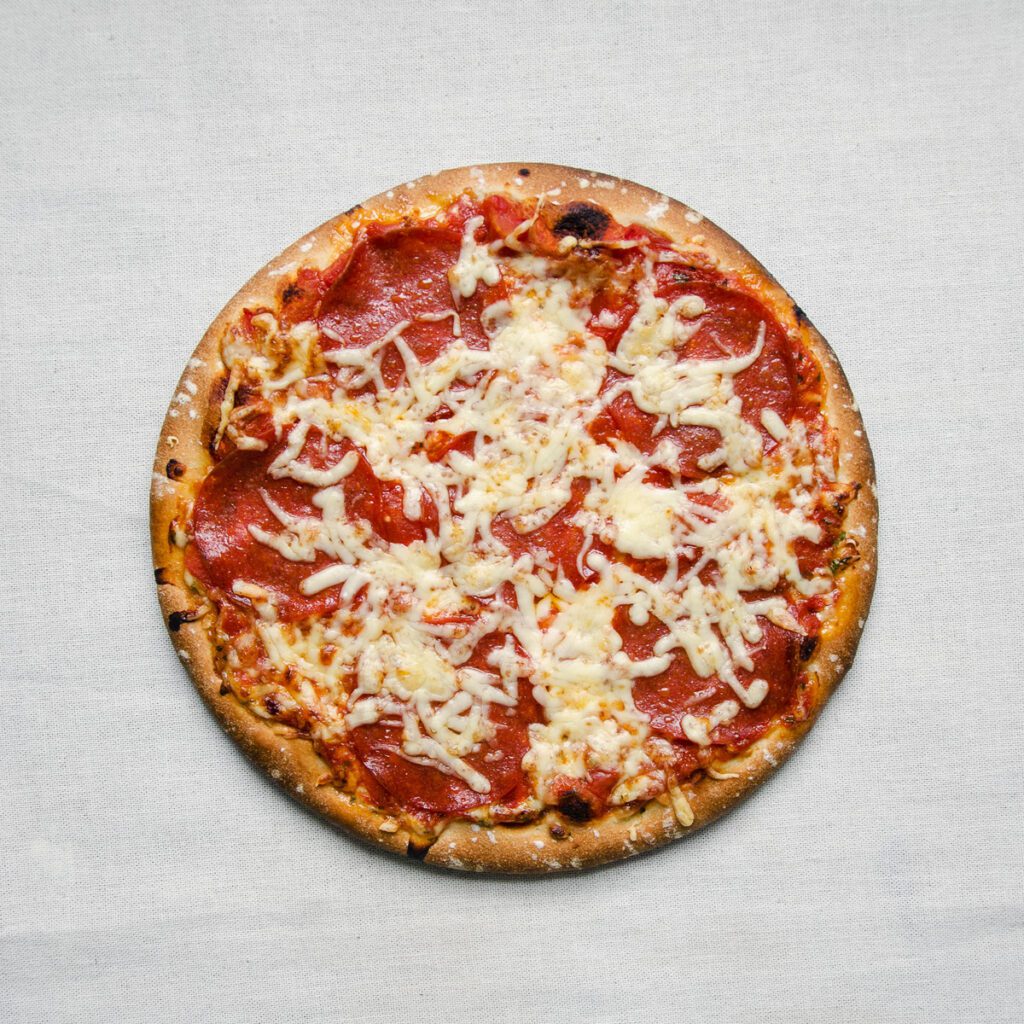
在羅馬尼亞,我們的披薩和義大利的很相似,但我們會在披薩上放更多東西:更多番茄醬、更多起司,所有東西都更多一點。
In Romania, we have similar pizzas as in Italy. However, we put more things on the pizza. More tomato sauce, more cheese, more of everything.
Simona Mihăilă. Romania 羅馬尼亞
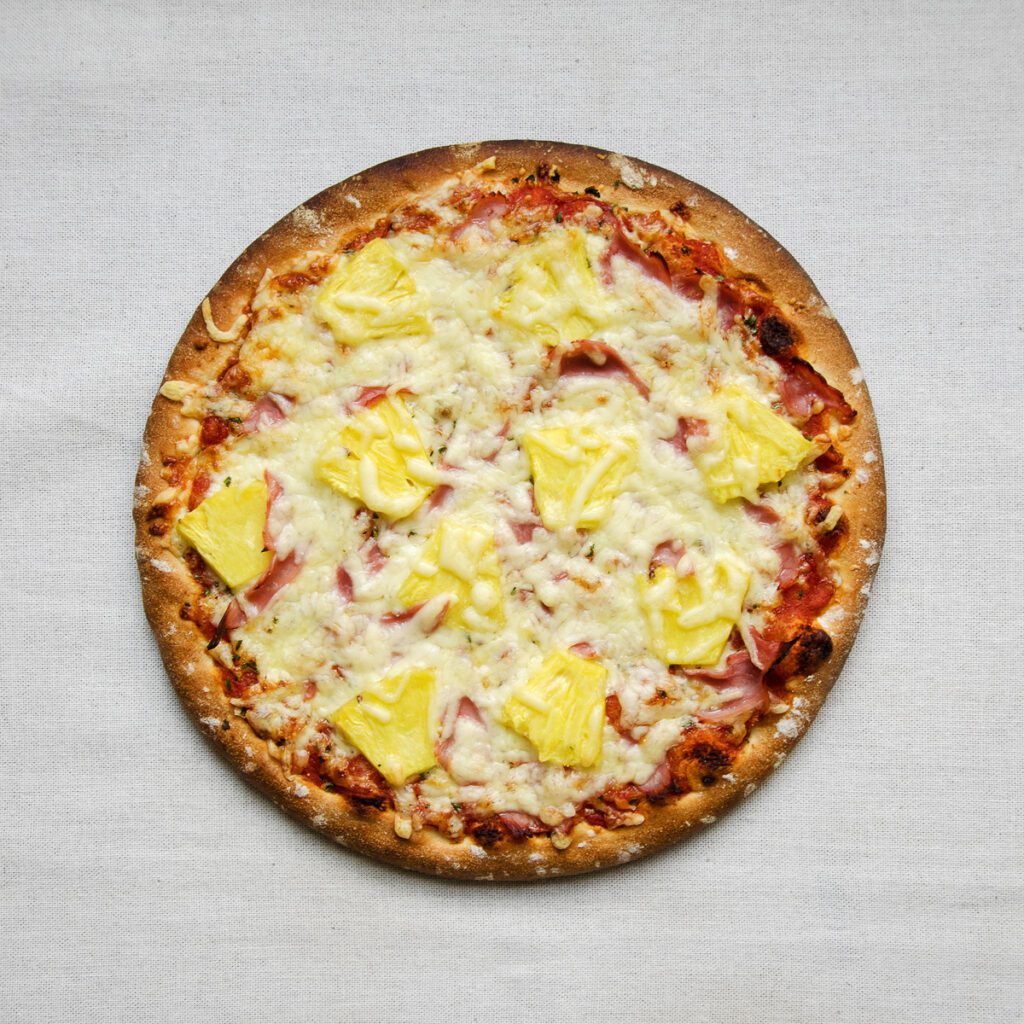
我們的披薩餅皮是厚的,是美式披薩的風格,有時候我們會用番茄醬(ketchup)取代番茄醬汁作為底料。披薩的常見配料包括香腸、洋蔥、火腿、鳳梨、培根和便宜的起司。
Our pizza has thick dough following the style of American pizza. Sometimes instead of tomato sauce, we use ketchup as the base. The common ingredients for pizza are sausage, onion, ham, pineapple, bacon and cheap cheese.
Luca Tóth. Hungary 匈牙利
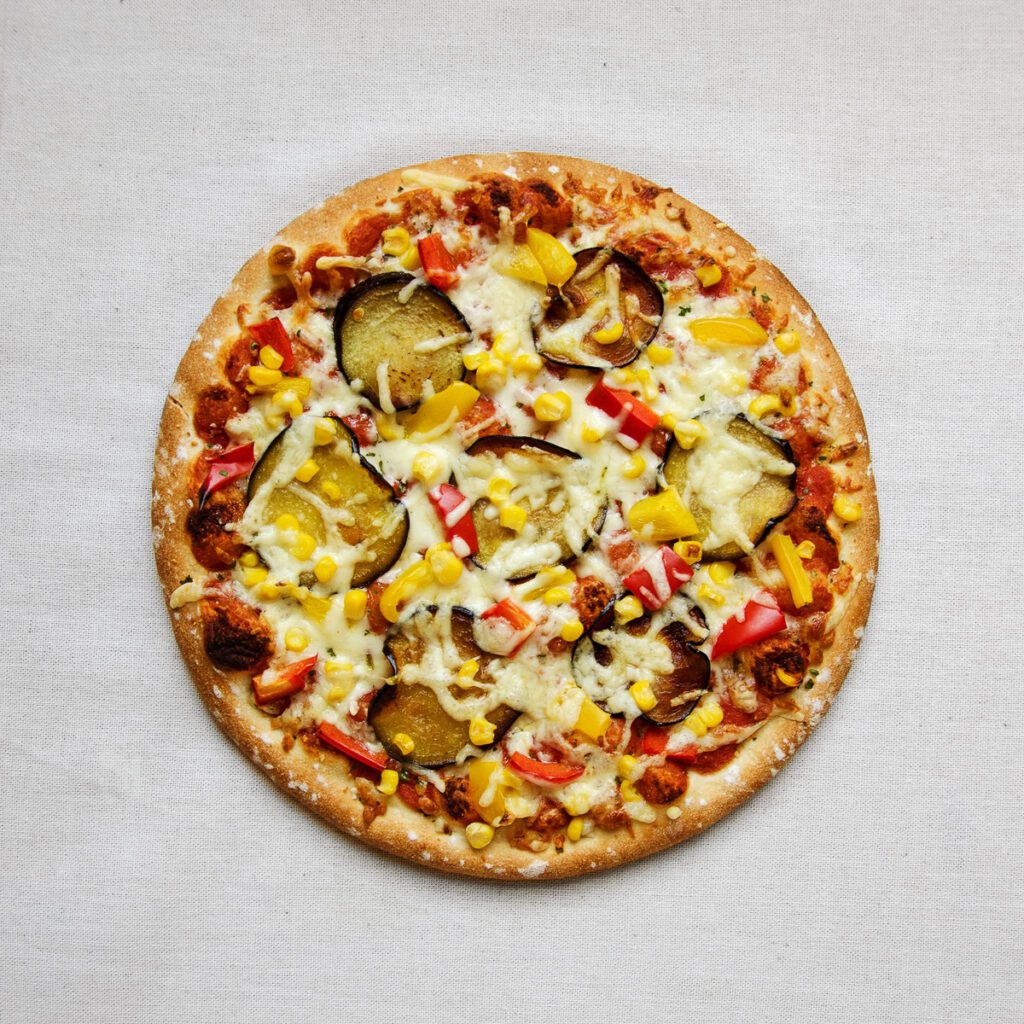
我們的披薩和義大利披薩相似。我們在素食披薩上使用如甜椒、玉米和茄子等食材。
Our pizza is similar to Italian pizza. We use ingredients like paprika, corn and aubergine on the vegetarian pizza.
Lesia Nahorniak. Ukraine 烏克蘭
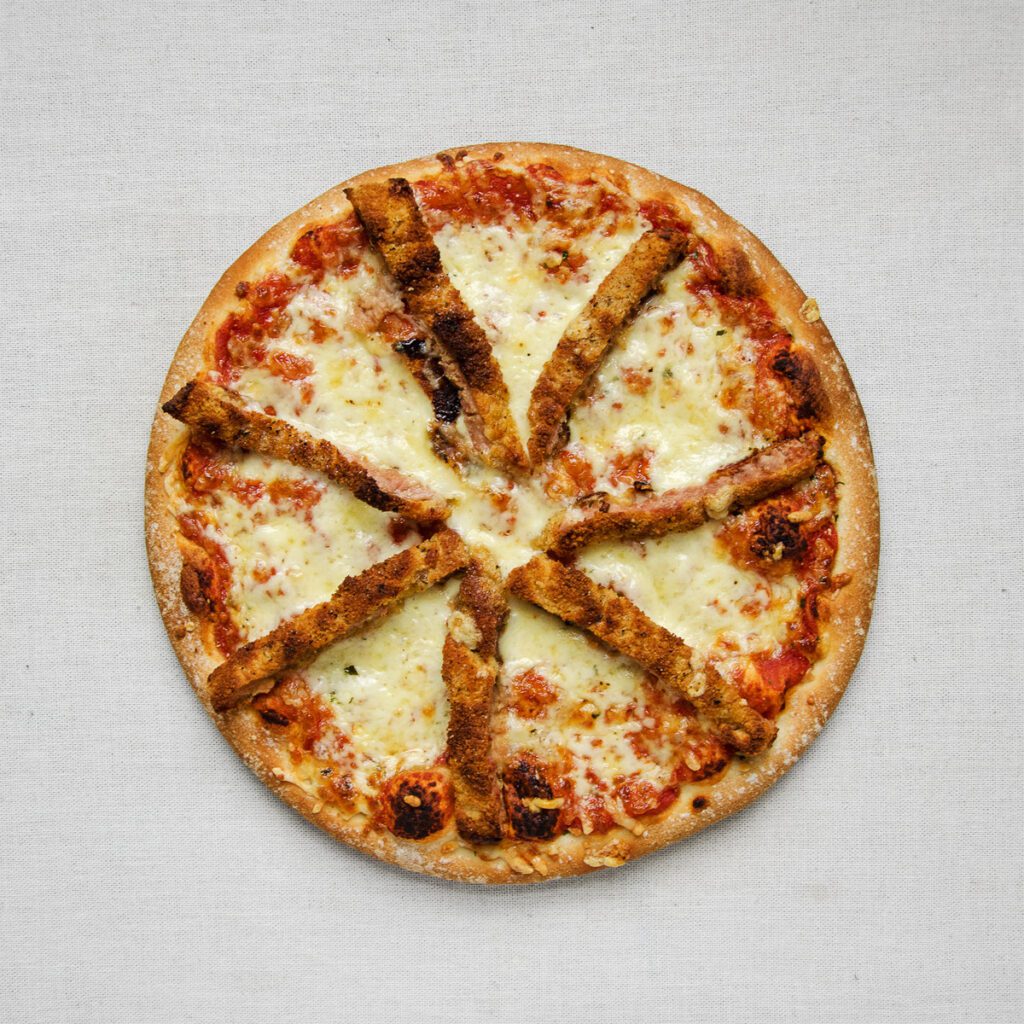
當我的家人造訪義大利的披薩店時,我的弟弟點了「炸豬排披薩」,這是他在家鄉最喜歡的披薩,結果把服務生嚇壞了。
When my family visited a pizzeria in Italy, my little brother ordered a “Schnitzel Pizza” which was his favourite pizza back home, that terrified the waiter.
Dominik Hezinger. Germany 德國
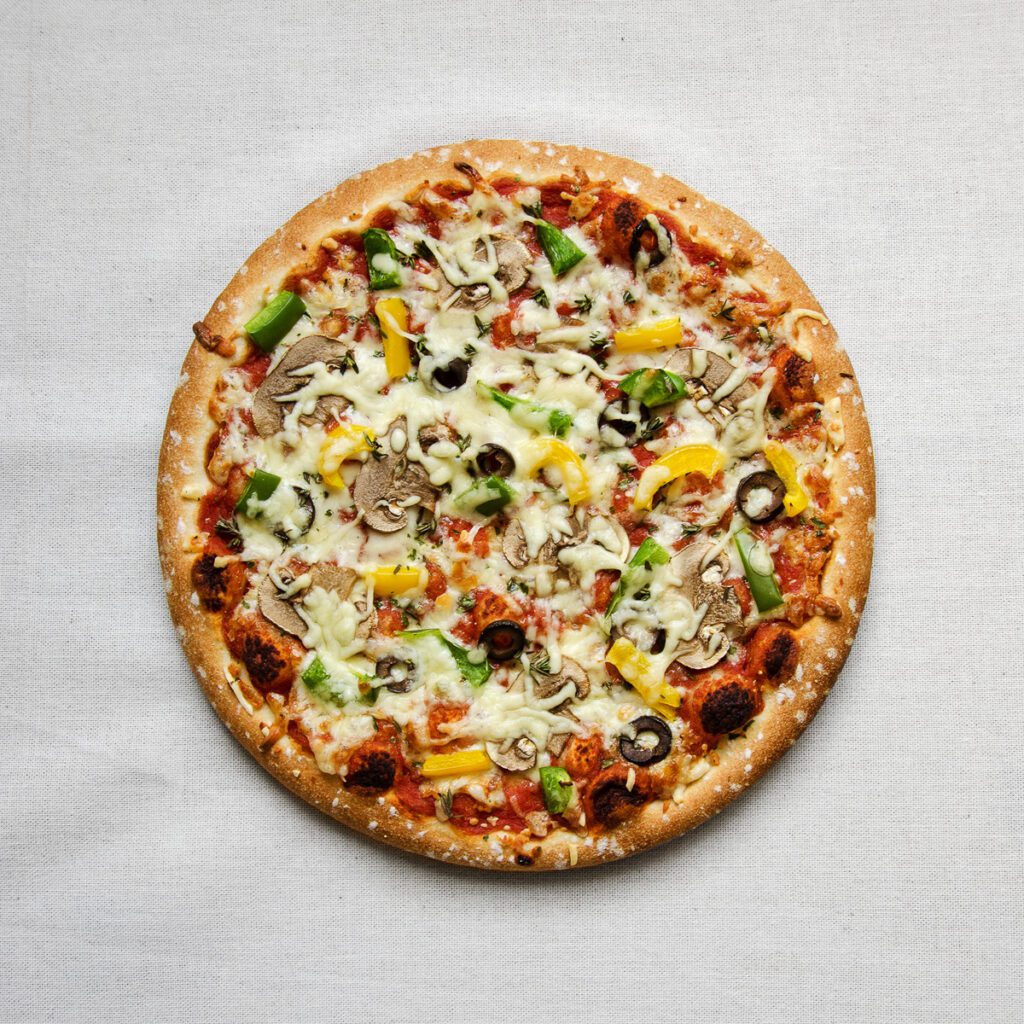
我們沒有特別的黎巴嫩披薩。我們有一種叫做 manakish 的酥皮點心,外國人認為這是黎巴嫩披薩,但實際上並不是。我想所謂的「黎巴嫩版本」披薩會使用番茄醬汁、甜椒、橄欖、蘑菇和起司,最常見的是在上面放百里香而不是牛至。
We don’t have special Lebanese pizzas. We have a pastry “manakish” that foreigners think is Lebanese pizza, but it’s not. I guess the “Lebanese version” of a pizza is tomato sauce, bell peppers, olives, mushrooms and cheese. Most common is putting thyme instead of oregano on top.
Ziad Bou Assi. Lebanon 黎巴嫩
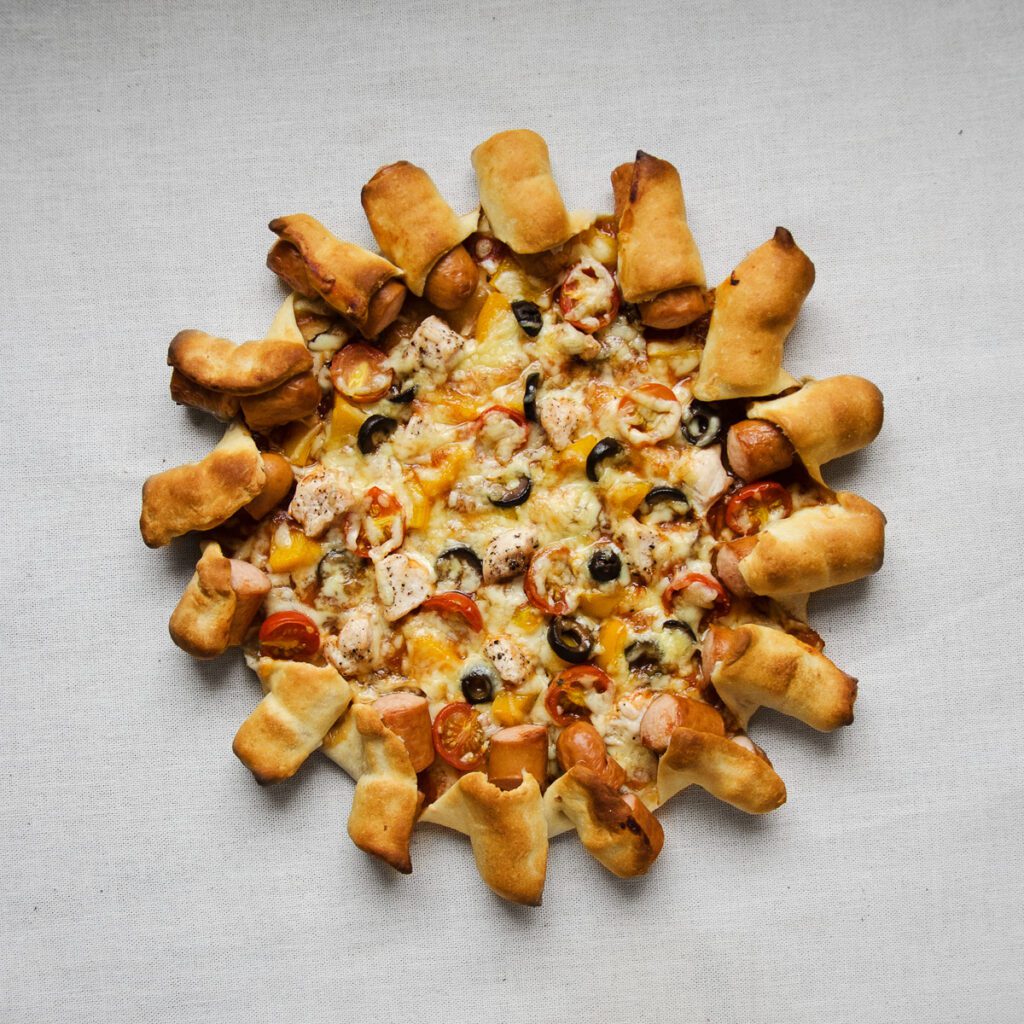
披薩有兩種基本類型。隨著年齡增長,我更願意為正宗的義大利或美式披薩付費。這些披薩通常配有簡單而常見的配料,如帕爾馬火腿和芝麻菜。如果我和朋友聚會或是訂外送,必勝客是首選,他們提供的口味已經調整過,適合香港人的口味,比如千島醬海鮮披薩、夏威夷披薩或是起司填充邊,每個季節還會推出新的口味。
There are basically 2 types of pizza. When I grew older, I am more willing to pay for authentic Italian or American pizzas. These pizzas are usually topped with common and simple ingredients such as Parma ham and Rucola. If I meet with friends or ask for home delivery, Pizza Hut is the first choice. They offer flavours that have been adjusted to fit the taste of Hong Kong people, things like seafood with thousand island dressing, Hawaiian, or stuffed crust. New flavours are introduced by season.
Louise Chih Yan Yau. Hong Kong 香港
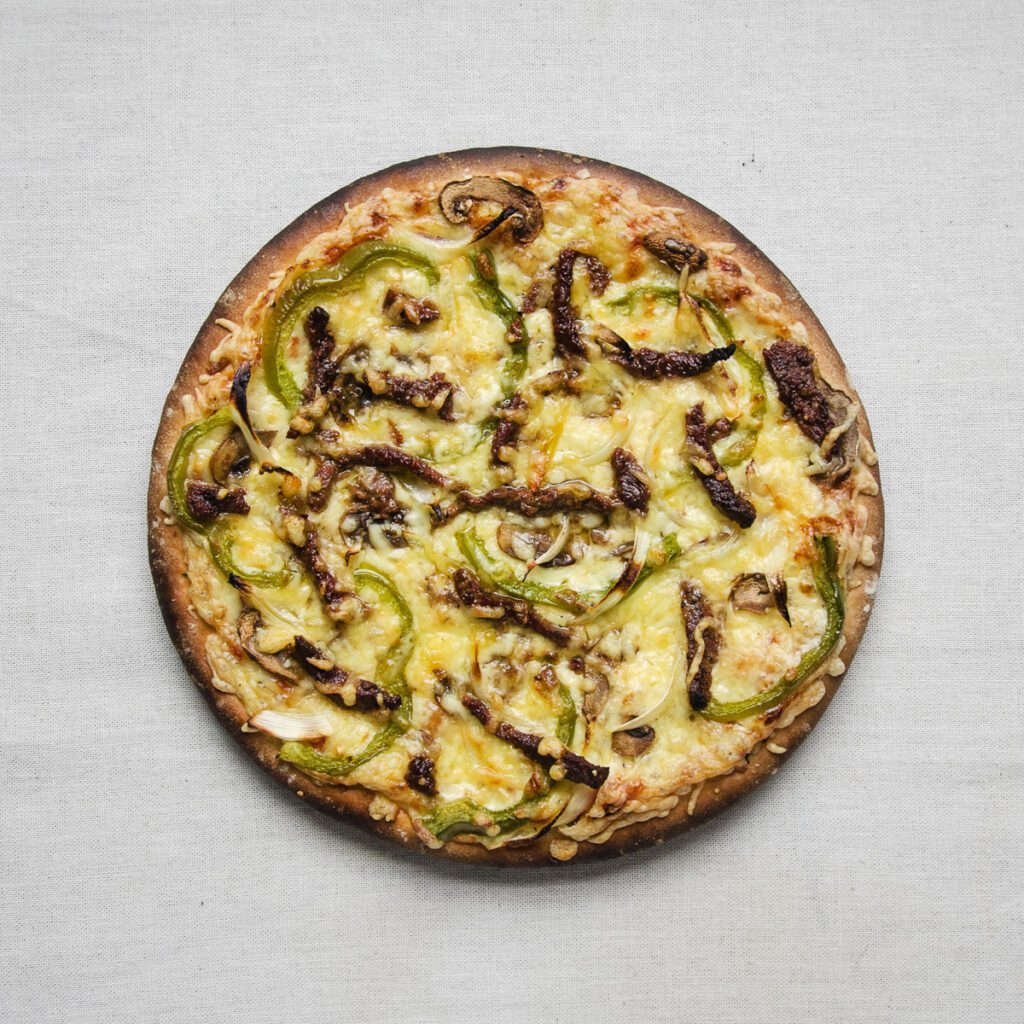
我認為台灣人擁抱新食物,食物在他們的日常生活中扮演著極其重要的角色,他們用食物來慶祝、安慰自己、向神明表示敬意,甚至也用食物來哀悼。台灣是一個移民的土地,這裡可以看到不同文化的交匯與融合。像披薩,他們會將傳統菜餚與披薩結合,創造出新的食物,這是他們的天性。
I think Taiwanese people embrace new food. Food is just so important in their daily life that they celebrate with food, comfort themselves with food, honour their gods with food, and even mourn with food. Taiwan is also an immigrant land that you can see different cultures meet and integrate here. Like the pizza, they combine their traditional dish with it. Creating new food is in their nature.
Yen Ju Chen. Taiwan 台灣
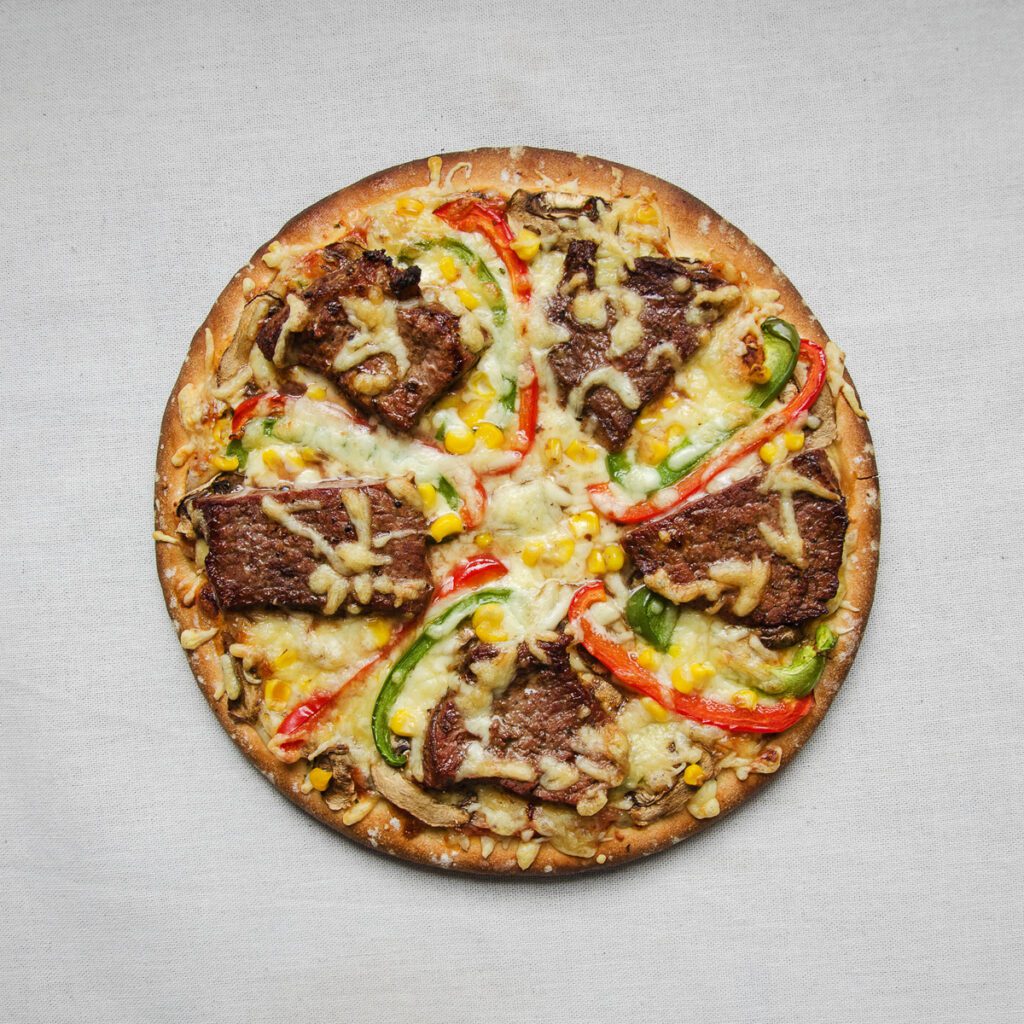
我以前常在上海的連鎖披薩店「Babeila」吃披薩,它比必勝客便宜。但那只是速食,不能與真正的披薩相比。
I used to eat pizzas from a chain pizzeria “Babeila” in Shanghai. It’s cheaper than Pizza Hut. But it’s only fast food, you cannot compare with real pizzas.
Xiao Fei Wang. China 中國
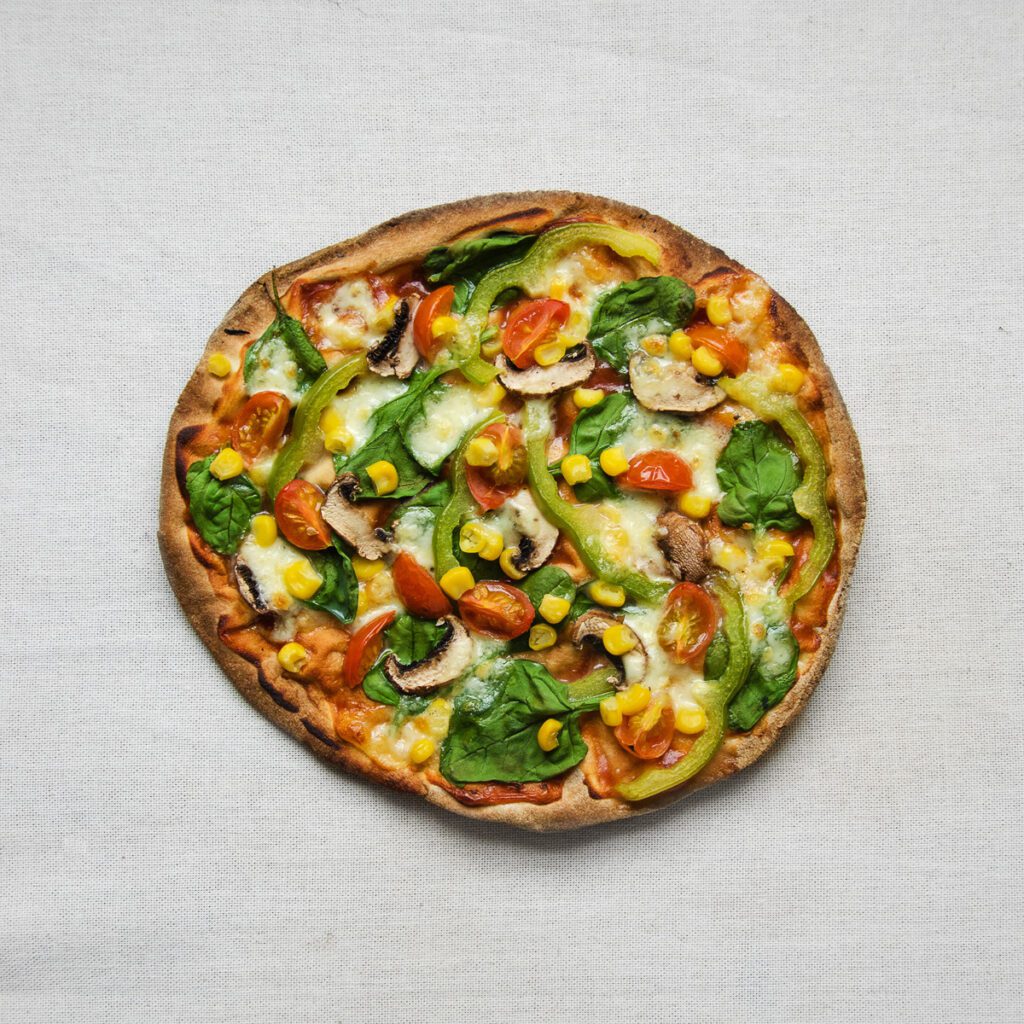
我記得在尼泊爾山區時的情景,有些地方為登山客提供披薩,我想試試看味道如何。我覺得他們並不真正知道正宗披薩應該怎麼做、該用什麼配料,他們用尼泊爾麵包,然後放上番茄醬、起司和一些蔬菜。番茄醬對披薩來說真的是不可接受的。從這樣的事情中,你可以看到文化的混合,真的很有趣。
I remember the situation when we were in the mountain area in Nepal. There were places offering pizzas to the hikers. I said to myself: “I will give it a try to see how it tastes.” I think they didn’t really know how a proper pizza should be made, out of which ingredients. They had this Nepalese bread and put tomato ketchup, cheese and some vegetables on it. Ketchup is a no-go for a pizza. From things like that, you see the cultural mix. It’s really fun.
Jonas Bonas. Pizza in Nepal 尼泊爾
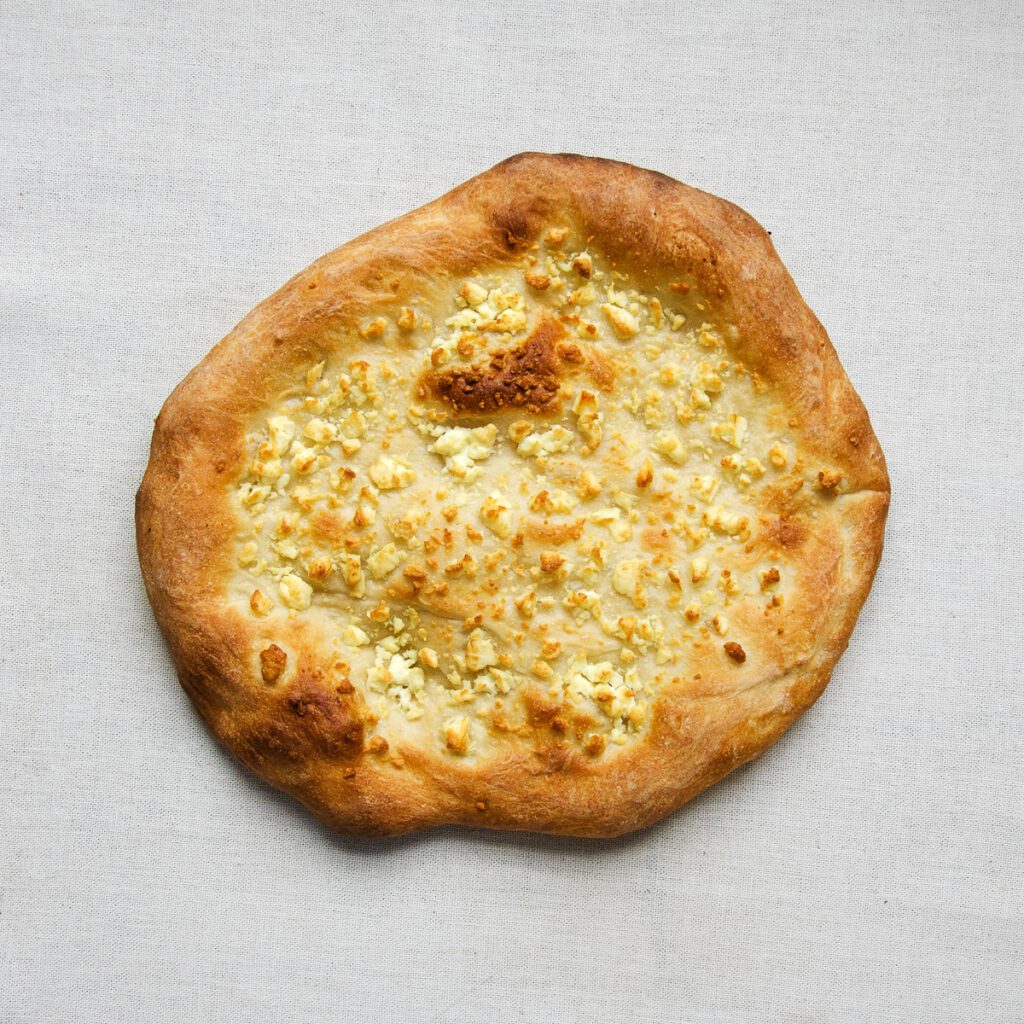
你可以在任何地方找到披薩,甚至在玻利維亞。在玻利維亞,他們就是不知道怎麼做披薩餅皮,餅皮超厚。而且他們放了很多起司,不是黃起司,是新鮮起司,他們放的是羊乳酪,味道很特別,非常鹹。而且他們不會在披薩上放番茄醬,基本上就是餅皮加新鮮起司,什麼都沒有。
You can find pizza everywhere, even in Bolivia. In Bolivia, they just don’t know how to make the bread, it’s super thick. And they put a lot of cheese on it, not yellow cheese but fresh cheese, it’s feta they put on the pizza. It’s something else, it’s salty. And they don’t put tomato sauce on pizza, so basically bread with fresh cheese. Nothing else.
Helene Niederfeilner. Pizza in Bolivia 玻利維亞
食物的遷徙揭示了跨國框架中的社會結構與文化
披薩的重製提供了深入了解跨國框架中社會結構與文化的寶貴視角:
- 與義大利地理位置相近的地區,如羅馬尼亞、匈牙利和烏克蘭的披薩,與義大利披薩有著十分相似的特徵,然而口味會根據當地人的偏好進行調整。
- 隨著物理距離的增加,顯現越多明顯的差異。例如,來自東亞的披薩在外觀和口味上發展出更加與眾不同的特色,在創意上的發揮空間更大。
- 某些披薩風格源自於披薩是「鋪有起司的扁平麵包」的想像。來自德國、台灣、尼泊爾和玻利維亞的披薩採用大量當地食材,並從在地料理汲取靈感。
- 食材的選擇反映了當地文化的特徵。例如黎巴嫩披薩顯示黎巴嫩擁有豐富的蔬菜資源,也可能遵循當地宗教規範,例如以蔬菜取代肉品。
- 在重塑異國民族食物的過程中,創意是被當地人接受且期待的。最明顯的例子就是來自香港的披薩。
- 東亞(香港、台灣、中國)披薩的名稱與配料之間的關聯,反映了當地人對外國文化的想像與認知。例如,「美式披薩」上放著大塊牛排,「日式披薩」將章魚燒與扁平麵包及大量起司結合,嗆辣的「墨西哥披薩」反映了當地人對墨西哥料理的印象,而「德式披薩」則放上維也納香腸。披薩成為多元文化融合下的產物。
- 儘管許多義大利披薩的特徵被取代,義大利人可能拒絕稱呼它們為披薩,只要保留了某些基本特徵(例如起司與麵包),當地人仍然認為它們是披薩。就外地人的角度來看,這些改變可能顯得奇怪,因為與他們對披薩的認知相悖。
Food Migration Reveals Social Structures and Cultures in Transnational Frameworks
The recreation of pizzas offers valuable insights into the social structures and cultures within transnational frameworks.
- Pizzas from regions geographically closer to Italy, such as Romania, Hungary, and Ukraine, share similar characteristics with Italian pizzas. However, their preparation is adapted to suit local preferences.
- More distinct features emerge with increasing physical distance. Pizzas from East Asia, for example, have evolved into unique variations in both appearance and taste, indicating greater room for creativity in these regions.
- Some pizza styles are derived from the imagination of pizza as flatbread topped with cheese. Pizzas from Germany, Taiwan, Nepal, and Bolivia extensively use local ingredients and incorporate elements of regional cuisines.
- The selection of ingredients reflects regional cultural characteristics. For example, Lebanese pizza highlights the abundance of vegetables in Lebanon. Moreover, the diet may adhere to local religious practices, such as abstaining from meat.
- Creativity is both accepted and anticipated by locals in the reinterpretation of ethnic food. The most evident example of this is the pizza from Hong Kong.
- The correlation between the names and toppings of pizzas in East Asia (Hong Kong, Taiwan, China) reflects the locals’ imagination and perceptions of foreign cultures. For example, the “Pizza American-style” features large chunks of beef steak, the “Pizza Japanese-style” combines takoyaki (a classic Japanese dish) with flatbread and an abundance of cheese, the “Pizza Mexican-style” incorporates spiciness, reflecting the locals’ view of Mexican cuisine, and the “Pizza German-style” is topped with Vienna sausages. Pizza thus becomes a fusion of multiple cultural influences.
- Even though many traditional Italian elements are replaced, and Italians may refuse to call them pizzas, the locals still consider them pizzas as long as certain fundamental characteristics (such as cheese on bread) are preserved. From an non-local‘s perspective, the alterations may seem strange, as they contradict conventional ideas of what a pizza should be.